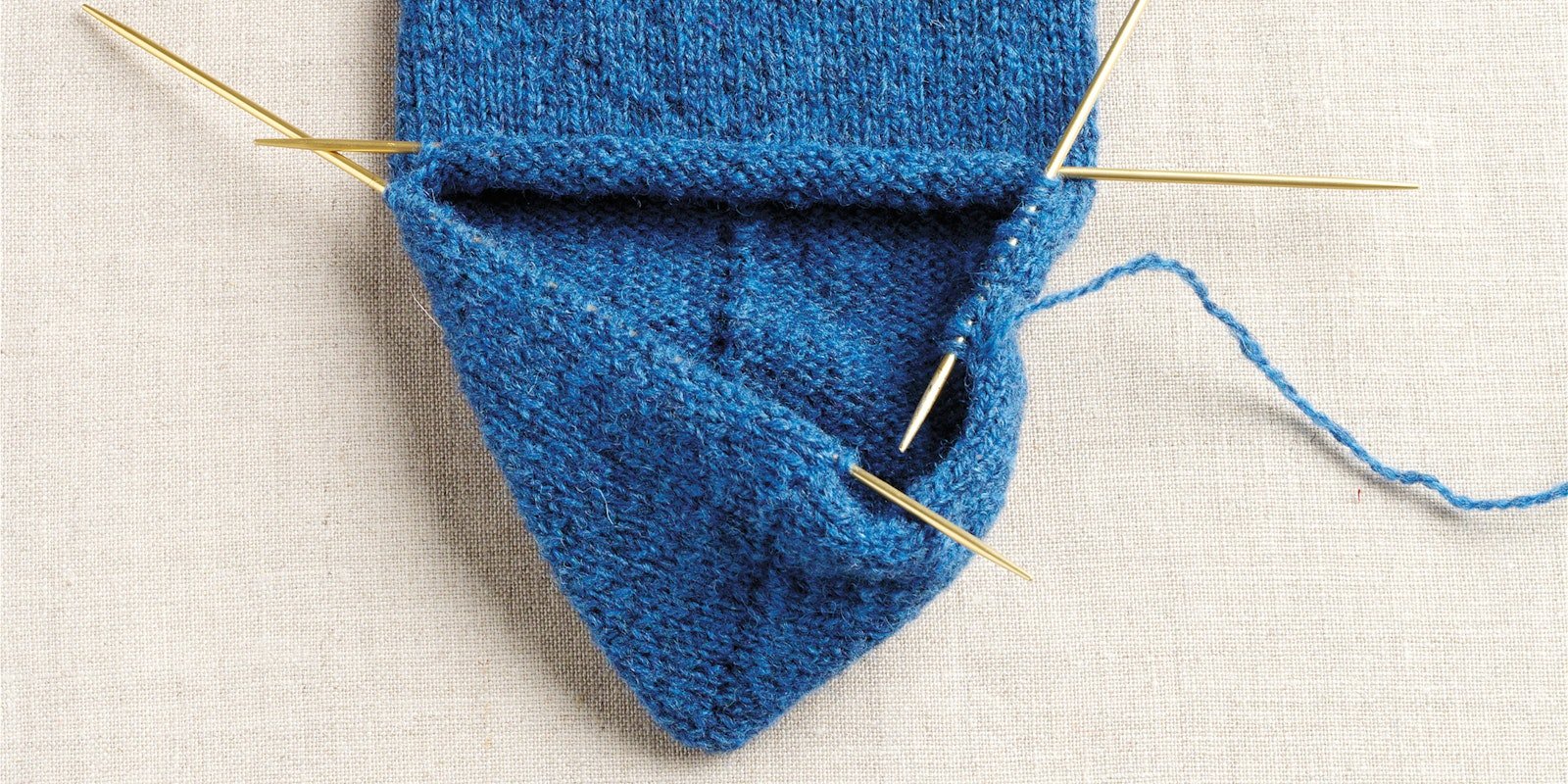These stockings are modeled after the surviving bits that we have of plain knee-length knitted stockings of late-fifteenth- and early-sixteenth-century Western Europe. They follow a very period style of construction, including the “common heel.” If someone dropped these stockings through a time warp into the early sixteenth century, I don’t think anyone picking them up would find them strange or out of place.
Like many of the historical originals, these stockings use a 2-ply knitting yarn, which was common at the time, rather than the 4-ply yarns more often used today. They also don’t have ribbing, which didn’t really come into fashion for the tops of stockings until the 1800s. There is some evidence of purl-stitch borders on period knitted fragments, so these stockings have a narrow strip of garter stitch at the top, which helps stabilize the edge. Stockings in this period were generally knee-length or longer; short socks didn’t come into fashion until about the 1820s, when men began to wear long trousers.
 Reproduction of late-fifteenth- and early-sixteenth-century knitted stockings with the common-heel construction technique used in Western Europe. This technique is a clever solution to covering some awkwardly shaped bits of human anatomy.
Reproduction of late-fifteenth- and early-sixteenth-century knitted stockings with the common-heel construction technique used in Western Europe. This technique is a clever solution to covering some awkwardly shaped bits of human anatomy.
While these stockings are authentic in construction, I’ve made a few adaptations to make them friendlier to modern knitters. They are knitted at 8 stitches to the inch (about 3 stitches per cm), a gauge that is comfortable for modern sock knitters and produces a soft fabric. They are shaped with decreases to produce a smooth and fairly close fit through the ankle. In working the heel flap, picking up stitches later is made easier by slipping the first stitch of each row and purling the last stitch.
Interested in making a historic pair of socks? This article and the companion project can be found in the Fall 2011 issue of Knitting Traditions.
Also, remember that if you are an active subscriber to PieceWork magazine, you have unlimited access to previous issues, including Knitting Traditions Fall 2011. See our help center for the step-by-step process on how to access them.
Chris Laning is an independent scholar of medieval and Renaissance knitting and embroidery who has been knitting for more than fifty years. She is a historical reenactor and sells historical patterns on Ravelry, where she is known as “claning.” She welcomes comments and questions. She thanks Joan Hall for the pictured project stockings.
Originally published March 14, 2019; updated May 12, 2025.

